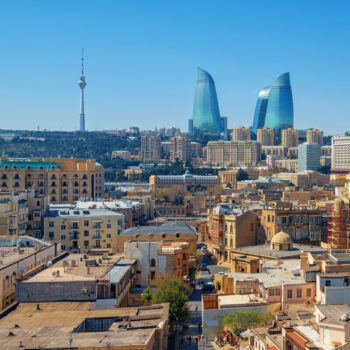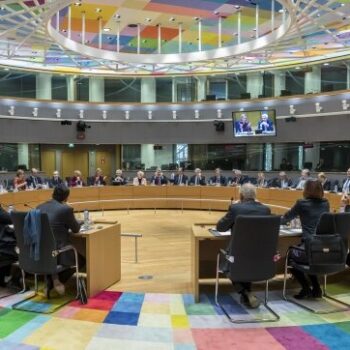The Climate Summit is fast approaching and the rumour mill is whirring, here we keep it simple. E3G’s guide to the Climate Summit in 6 steps.
1.When and where is the Climate Summit?
2.What is the purpose of the Climate Summit?
3. Who will attend the summit?
4. What other events are happening around the Climate Summit?
5. What will happen on the day?
6. What is the expected outcome from the summit?
1.When and where is the Climate Summit?
The Climate Summit will take place on Tuesday 23rd September at UN headquarters in New York.
2.What is the purpose of the Climate Summit?
The summit is not intended to follow the rhythm of the UNFCCC negotiations but is anticipated to mobilise action and catalyse political will ahead of the Paris negotiations in December 2015.
Ban Ki-moon is convening the summit citing the moment as ‘a turning point for generating climate action and mobilizing political will for a meaningful, universal climate agreement next year.’
Christiana Figueres describes the Summit as ‘a moment in time for heads of state, cities, organisations, and companies to announce bold new initiatives to address climate change in the short to medium term.’
The Summit is also being seized upon as a platform for the public to express their views on climate change. Ricken Patel of Avaaz, core organisers of the global People’s Climate March occurring on the Sunday before the Summit, said ‘this is about launching a movement that can literally save the world over the long-term. We want to build to last’.
.jpg)
3. Who will attend the summit?
The summit will be attended by leaders from many communities – cities, heads of state, business, and non-governmental organisations.
The list of attending heads of state is growing by the day. There are over 100 governments attending and amongst them we've had confirmations from a number of fresh faces: Italy's Matteo Renzi, Bangladesh's Sheikh Hasina, Chile's Michelle Bachelet, Tanzania's Jakaya Kikwete, Denmark's Halle Thornig Schmidt, France's Francoise Hollande, Mexico's Enrique Pena Nieto and US president Barack Obama. There's clearly a new wave of leaders rising up the ranks to inspire more action on climate change from others and show what can be done.
Much has also been said about those head’s of state who won’t be attending; China, Germany and India in particular. However, each one of these countries has recently made great strides in scaling up climate action even without head of state representation at the Summit – they’ll simply lose the opportunity to announce it themselves. Whatever the reasons and motivations of leaders like Xi Jinping, Angela Merkel and Narendra Modi who have declined to attend the Summit, it will be impossible for them to escape awareness of climate change climbing up the political agenda, in the media, from publics, in bilaterals and the many political appointments on the road to Paris.
4. What other events are happening around the Climate Summit?
The Climate Summit cannot be considered in isolation, it is better considered as the anchor for a whole diversity of events that have grown up to surround it.
Proceedings are kicking off on Sunday 21st with people across the world set to take to the streets in their hundreds and thousands to ‘inspire the world’s most powerful leaders to take ambitious action on the climate crisis’. In the following week the range of events bring the voices of a huge diversity of constituencies centre stage; scientists, women, faith, indigenous, youth, business, forest communities, academics. For more info visit the Climate Week 2014 website, the place to go for an up to date calendar of events.
In addition to these publically listed events there will no doubt be many conversations in corridors, bilaterals and dinners. Only a few are likely to know the specific outcomes of these meetings but these too will lay essential groundwork ahead of Paris.

5. What will happen on the day?
The Summit will begin with a 30 minute opening ceremony initiated by 26 year old Kathy Jetnil-Kijiner of the Marshall Islands. The delegates then split between three plenaries for the ‘national action and ambition announcements’ delivered by attending heads of state, followed by a joint conclusions session. Over lunch the ‘private sector forum high-level luncheon’ will take place in the delegate’s dining room. In to the afternoon the action and ambition announcements continue until the mid-afternoon when the summit splits into two tracks. The first, multilateral and multi-stakeholder action announcements on finance, energy, forests, agriculture, resilience, petroleum and industry, transport and cities. The second a series of thematic discussions on climate science, voices from the climate front lines, climate, health and jobs and economic case for action. In the early evening all delegates will reconvene for a final 30 minute long closing ceremony.
The programme in full can be found here.

6. What is the expected outcome from the summit?
There will be no negotiated outcome from the Climate Summit. But no doubt there will be a plethora of commentaries about the summit, including a chairs summary from Ban Ki-moon himself. Leader’s statements, the initiatives developed and the informal meetings in the sidelines will all contribute to the outcome.
Overall the Summit is not anticipated to be transformational but it will be bold. It will have served its purpose if it creates a positive narrative that puts climate change back on the global agenda, getting our leaders to take collective political ownership and responsibility for Paris and beyond.
For more information on the Climate Summit see: What will a successful Climate Summit achieve?
Camilla Born is a researcher in the Climate Diplomacy team at E3G. She tweets at @camillaborn.


